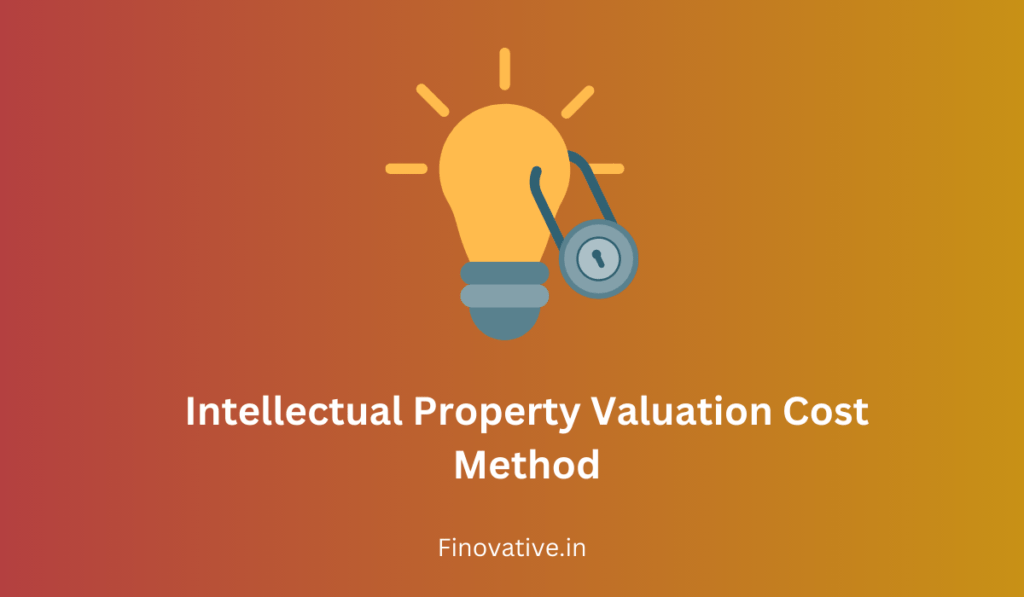Intellectual property (IP) is the lifeblood of innovation-driven economies, and its valuation is crucial for various business endeavours, from mergers and acquisitions to securing investments and making informed strategic decisions. One of the methods employed to assess the value of IP assets is the “Cost Method.” In this article, we’ll delve into the Cost Method of intellectual property valuation, breaking it into understandable components and shedding light on when and how it should be used.
The Significance of Intellectual Property Valuation
Intellectual property, including patents, copyrights, trademarks, and trade secrets, plays a pivotal role in modern businesses. Valuing these intangible assets is essential for several reasons:
- Strategic Decision-Making: Knowing the value of your IP helps in making informed decisions about protecting, licensing, or selling these assets.
- Financial Transactions: IP valuation is critical for transactions like mergers, acquisitions, licensing agreements, and seeking investments. It helps in negotiations and determining fair market value.
- Taxation and Accounting: Accurate IP valuation impacts tax calculations and financial reporting. It can affect tax liabilities and balance sheets.
- Legal Proceedings: In legal disputes, the value of IP assets often becomes a central issue. A well-documented valuation can provide strong evidence in court.
What is the Cost Method of Intellectual Property Valuation?
The Cost Method is one of several approaches used to value intellectual property. It involves determining the value of IP assets based on the costs incurred to create, develop, or acquire them. In essence, it answers the question: “How much did it cost to create or acquire this IP?”
Here’s how the Cost Method works:
- Identifying Costs: The first step is to identify and compile all the costs associated with the creation, development, or acquisition of the IP asset. These costs can include:
- Research and development expenses
- Legal fees for patents, copyrights, or trademarks
- Costs of prototypes or models
- Acquisition costs (if the IP was purchased from a third party)
- Maintenance and renewal costs (for ongoing protection)
- Any other direct costs related to the IP asset
- Adjusting for Time: In some cases, costs may have been incurred over an extended period. To make them relevant to the current valuation, adjustments for the time value of money may be applied. This accounts for the fact that a dollar spent today is worth more than a dollar spent in the future.
- Determining Fair Market Value: Once all relevant costs have been identified and adjusted, the total is considered the fair market value of the IP asset using the Cost Method.
When to Use the Cost Method for IP Valuation
The Cost Method is particularly suitable in the following situations:
- Startups and Early-Stage Companies: For businesses that are just starting or are in their early stages, the Cost Method can be advantageous. These companies often have limited revenue or earnings data, making it challenging to apply income-based valuation methods effectively.
- Assets with Low Market Activity: In cases where there is limited market activity or comparable sales data for similar IP assets, the Cost Method provides a more straightforward approach to valuation.
- Asset-Specific Valuation: When the primary focus is on assessing the value of a specific IP asset, such as a unique patented technology or a custom-designed software application, the Cost Method can be quite relevant.
- Cost-Driven Industries: Some industries place significant emphasis on the costs associated with IP development. For example, in pharmaceuticals or biotechnology, the research and development costs for drug discovery are substantial, and the Cost Method can be a critical tool for valuation.
Example of the Cost Method in Action
To illustrate the Cost Method, let’s consider a practical example involving a fictional company, “TechGen Innovations,” which has developed a groundbreaking software application called “InnoSecure.”
Step 1: Identifying Costs
TechGen Innovations begins by compiling all relevant costs associated with the creation of InnoSecure. These costs include:
- Research and development expenses: $2 million
- Legal fees for patents and copyrights: $250,000
- Prototype development and testing: $500,000
- Acquisition costs of proprietary technology: $1 million
- Ongoing maintenance and renewal costs over five years: $300,000
Step 2: Adjusting for Time
To adjust for the time value of money, TechGen Innovations applies a discount rate of 10%, representing the estimated return that could have been earned on the investments during the asset’s development period.
- Research and development expenses: $2 million (no adjustment as they were incurred over a relatively short period)
- Legal fees for patents and copyrights: $250,000 (adjusted to $202,020 to reflect their present value)
- Prototype development and testing: $500,000 (adjusted to $374,429)
- Acquisition costs of proprietary technology: $1 million (adjusted to $620,921)
- Ongoing maintenance and renewal costs: $300,000 (adjusted to $186,276)
Step 3: Determining Fair Market Value
The fair market value of TechGen Innovations’ intellectual property asset “InnoSecure” using the Cost Method is calculated as the adjusted total of all costs:
$2,000,000 (R&D) + $202,020 (Legal fees) + $374,429 (Prototype) + $620,921 (Acquisition) + $186,276 (Maintenance) = $3,383,646
TechGen Innovations would value the intellectual property asset “InnoSecure” at approximately $3.38 million using the Cost Method.
Advantages and Limitations of the Cost Method
The Cost Method offers several advantages and limitations:
Advantages:
- Simplicity: It’s a straightforward method, making it accessible for small businesses and startups.
- Useful in Early Stages: When IP assets have not yet generated significant income, this method provides a starting point for valuation.
- Objective: It relies on documented costs, making it an objective approach that can withstand scrutiny.
Limitations:
- Ignores Market Dynamics: The Cost Method does not consider factors like market demand, competitive landscape, or the IP asset’s potential for revenue generation.
- Not Suitable for Established IP: For IP assets with a substantial market presence and revenue history, the Cost Method may undervalue them.
- Limited to Historical Costs: It focuses solely on historical costs, potentially overlooking the IP’s intrinsic value.
Conclusion
The Cost Method is a valuable tool for valuing intellectual property, particularly when other methods are impractical or when assessing IP assets with limited market data or those in their early stages of development. Understanding the costs associated with creating, acquiring, or maintaining IP assets allows businesses to establish a foundation for their valuation process.
However, it’s important to note that the Cost Method is just one of several approaches to IP valuation. In practice, combining multiple valuation methods, including income-based and market-based approaches, often provides a more comprehensive and accurate assessment of an IP asset’s value. Ultimately, the choice of valuation method should align with the specific circumstances and objectives of the valuation process, ensuring that the IP’s true worth is recognized and utilized effectively.


